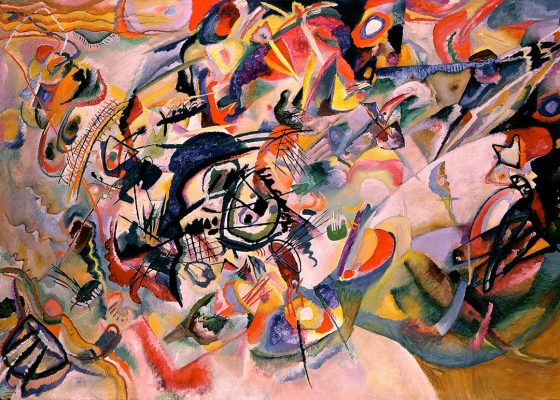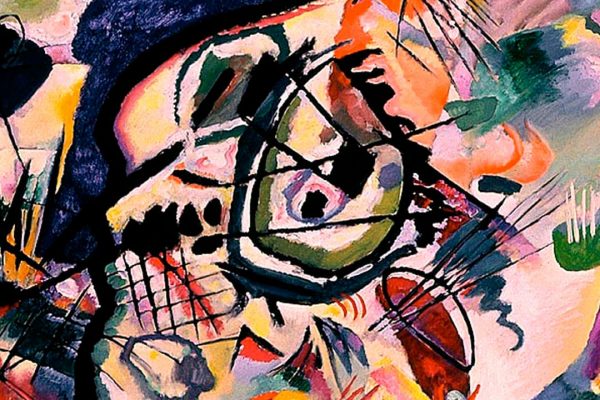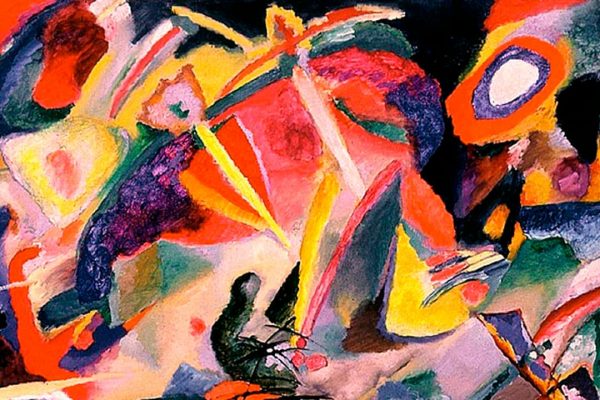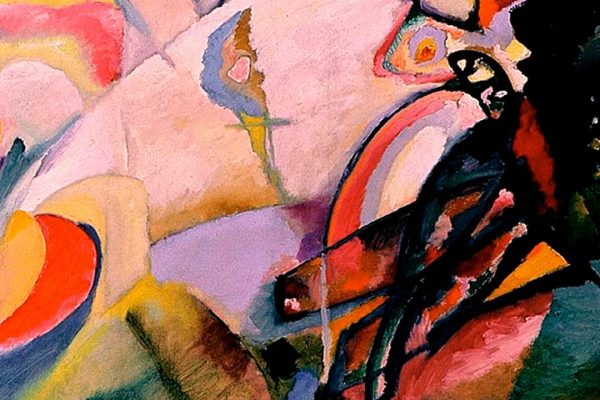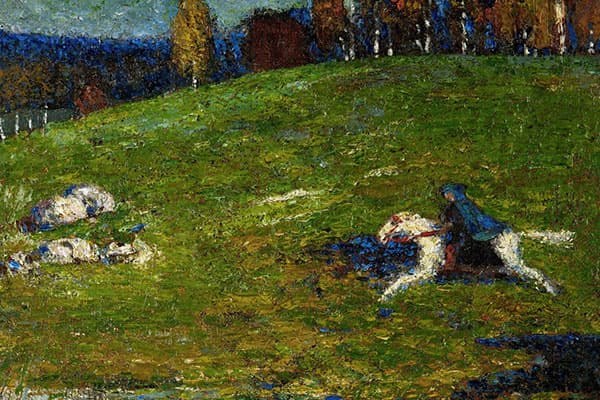Wassily Kandinsky · Composition VII
1913 – Oil on canvas – Tretyakov Gallery, Moscow
Although the name of “father of abstraction” has been assigned to several painters, from Pablo Picasso to J.M.W. Turner, few painters could claim it with as much justice as Wassily Kandinsky (1866-1944). Born in Moscow, he became fascinated with the works of Claude Monet and their “unsuspected power of the palette”.
Kandinsky later moved to Berlin, where he met other artists such as Franz Marc and August Macke. Both as a painter and as a theorist, the pre-war Kandinsky changed the history of Art.
This lyrical composition is the pinnacle of Kandinsky’s powers. Although it was painted in just four days, Kandinsky said that the work was “the most complex piece I ever painted”. Talking about his compositions, the artist said: “The expressions of feelings that have been forming within me (…), which, after the first preliminary sketches, I have slowly and almost pedantically examined and worked out. This kind of picture I call a ‘Composition’“. The direct influence of Kandinsky in later artists such as Arshile Gorky, Jackson Pollock or Willem de Kooning is more than evident.
Text: G. Fernández, theartwolf.com
Follow us on:

